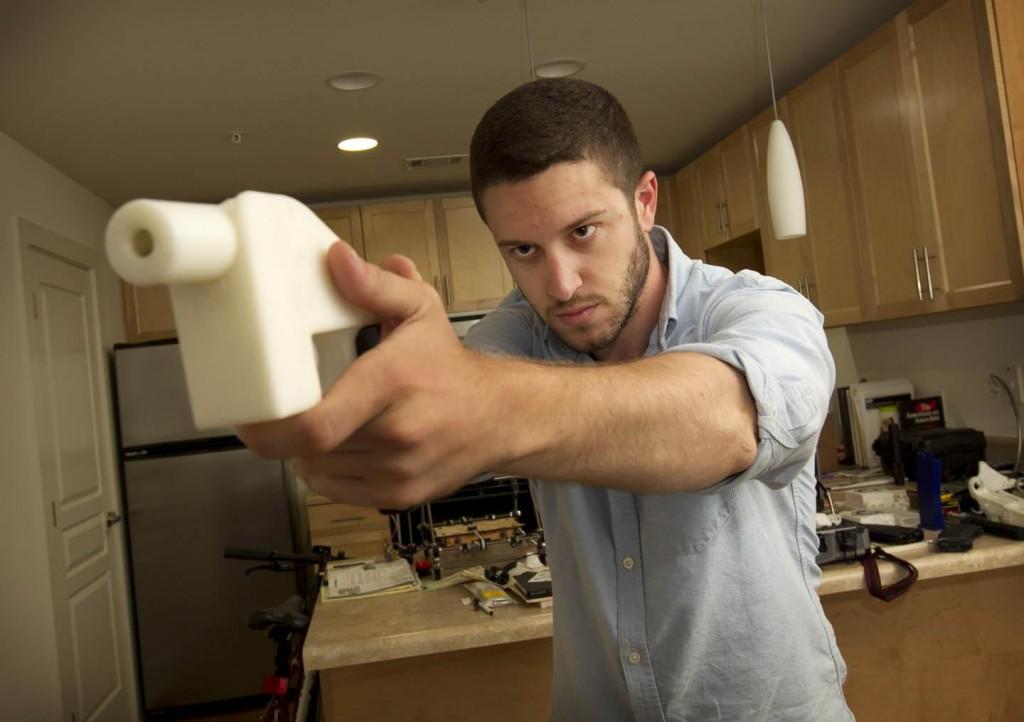We all know that the potential of 3D printing is massive. Open any newspaper around the world and chances are you’ll see at least one story about 3D printing doing something mind-bending, entertaining, or genuinely world changing. Just counting designs printed on Robox, we’ve seen everything from huge leaps in prosthetics via the Open Hand Project to our very own 3D printed ‘pigeon scarers’ in New York City. In the past, amazing 3D printed designs came from factories or college technology labs. Now with the proliferation of affordable and user-friendly household 3D printers, we’re increasingly seeing amazing leaps in design come from amateurs and enthusiasts operating out of their garages.
Just counting designs printed on Robox, we’ve seen everything from huge leaps in prosthetics via the Open Hand Project to our very own 3D printed ‘pigeon scarers’ in New York City. In the past, amazing 3D printed designs came from factories or college technology labs. Now with the proliferation of affordable and user-friendly household 3D printers, we’re increasingly seeing amazing leaps in design come from amateurs and enthusiasts operating out of their garages.
3D printing is now more than ever within reach of the everyday consumer, with small and sleek designs which can fit on anyone’s desk and at prices which more and more people can afford. I firmly believe that this is a good thing, empowering thousands of people to become makers and contribute to the physical world around them. However, as with any new technology, it’s what we make of it that matters, and we will not always agree with what other people choose to use these new technologies for.
In particular, there have been mounting concerns recently about the proliferation of designs for 3D printable weapons, including 3D printed guns. This issue hit the headlines again recently with the announcement that the State Department was looking to effectively ban the distribution of designs for 3D printed guns online. Whether or not it will succeed is up for debate. Regardless, we can’t ignore what a big media story this has become – clearly, 3D printed guns are a genuine concern for governments and (some of) their citizens.
However, the truth is that you can’t yet print a properly working gun on a 3D printer, and the media storm around 3D printed guns has blown the issue completely out of proportion. The Liberator, perhaps the closest that we have come to a working 3D printed gun, suffers from many flaws. Not least of these is that it is made out of plastic.

Defense Distributed’s Cody WIlson
There is a reason why nobody has seriously made a gun out of plastic before. It simply isn’t a good material for housing what is essentially a small explosion. 3D printed guns, including the Liberator, so far have either failed to shoot properly, or they have failed to shoot at all, with most being more of a danger to the person holding the gun than anyone in front of them. And of course, you still can’t 3D print a bullet. Household 3D printers are great for making all sorts of useful objects and designs. They are not, however, very good at making guns.
So why is the State Department putting so much effort into trying to restrict the proliferation of designs online which are essentially useless? The answer may well be that it wants to show it’s being proactive. After all, even the State Department needs to look after its public image and when people are worried about something, they need to be seen to be doing something about it.
There may come a day when 3D printed weapons are a concern, but that day is not today. While it’s no bad thing that the State Department is already planning for the future, we should not fear the movement of 3D printing into households and into the hands of the many. 3D printing has incredible potential. A few publicity hounds with toy guns won’t change that.
Chris Elsworthy is the CEO of CEL and creator of the Robox 3D printer.
Subscribe to Our Email Newsletter
Stay up-to-date on all the latest news from the 3D printing industry and receive information and offers from third party vendors.
You May Also Like
Profiling a Construction 3D Printing Pioneer: US Army Corps of Engineers’ Megan Kreiger
The world of construction 3D printing is still so new that the true experts can probably be counted on two hands. Among them is Megan Kreiger, Portfolio Manager of Additive...
US Army Corps of Engineers Taps Lincoln Electric & Eaton for Largest 3D Printed US Civil Works Part
The Soo Locks sit on the US-Canadian border, enabling maritime travel between Lake Superior and Lake Huron, from which ships can reach the rest of the Great Lakes. Crafts carrying...
Construction 3D Printing CEO Reflects on Being Female in Construction
Natalie Wadley, CEO of ChangeMaker3D, could hear the words of her daughter sitting next to her resounding in her head. “Mum, MUM, you’ve won!” Wadley had just won the prestigious...
1Print to Commercialize 3D Printed Coastal Resilience Solutions
1Print, a company that specializes in deploying additive construction (AC) for infrastructure projects, has entered an agreement with the University of Miami (UM) to accelerate commercialization of the SEAHIVE shoreline...






























